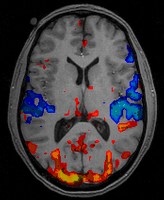We have been studying bladder cancer in a mouse model of the disease and we are seeking to understand the molecular features of the mouse models as they relate to human bladder cancer.

We have been studying bladder cancer in a mouse model of the disease and we are seeking to understand the molecular features of the mouse models as they relate to human bladder cancer.

The Federal Communications Commission (FCC) and the Census regularly publish data on U.S. Internet availability, performance and use, at granularities from census block to county and state. The project goal is to answer questions based on the available data, such as “How reliable is Internet access?”, “Who is deploying fiber where?”, “Can we predict reliability of different technologies?”, “Can we predict the deployment of fiber?”

When a colorectal cancer has grown through the wall of the colon or rectum and into other adjacent tissues or organs, it is identified as a T4 primary tumor. If there is no evidence of distant metastasis then it is labeled a locally advanced tumor. Such locally advanced tumors account for approximately 5-15 % of new colorectal cancers. Surgery remains the principal treatment modality for patients with locally advanced colorectal cancer. Studies have demonstrated planned en bloc or multivisceral resections rather than intraoperative assessment of margins more likely results in R0 resections leading to better local control and long-term survival. However, the decision-making for a surgeon confronting a T4 colorectal cancer is challenging because surgery related mortality rates after multivisceral resections are reported up to 12%.

The development of computational data science techniques in natural language processing (NLP) and machine learning (ML) algorithms to analyze large and complex textual information opens new avenues to study intricate processes, such as government regulation of financial markets, at a scale unimaginable even a few years ago. This project develops scalable NLP and ML algorithms (classification, clustering and ranking methods) that automatically classify laws into various codes/labels, rank feature sets based on use case, and induce best structured representation of sentences for various types of computational analysis.

Using machine learning to conduct brain state classification at real-time on EEG/fNIRS/fMRI data.

Networked systems are ubiquitous in modern society. In a dynamic social or biological environment, the interactions among subjects can undergo large and systematic changes. Due to the rapid advancement of technology, a lot of social networks are observed with time information. Some examples include the email communication network between users, comments on Facebook, the retweet activities on Twitter, etc. We aim to propose new statistical models and associated methodologies for various problems including community detection, change point detection and behavior prediction. The proposed methods will be evaluated on a wide range of network datasets in different areas.

DNA sequence reads from a community of microbial genomes are currently processed without considering sequence variants. The project involves building a processing pipeline of such billions of short reads, identifying closest strains they might belong to, assembling them into specific clones, calling their variants, and analyzing the dynamic nature of these bacterial strains along sampling points.
